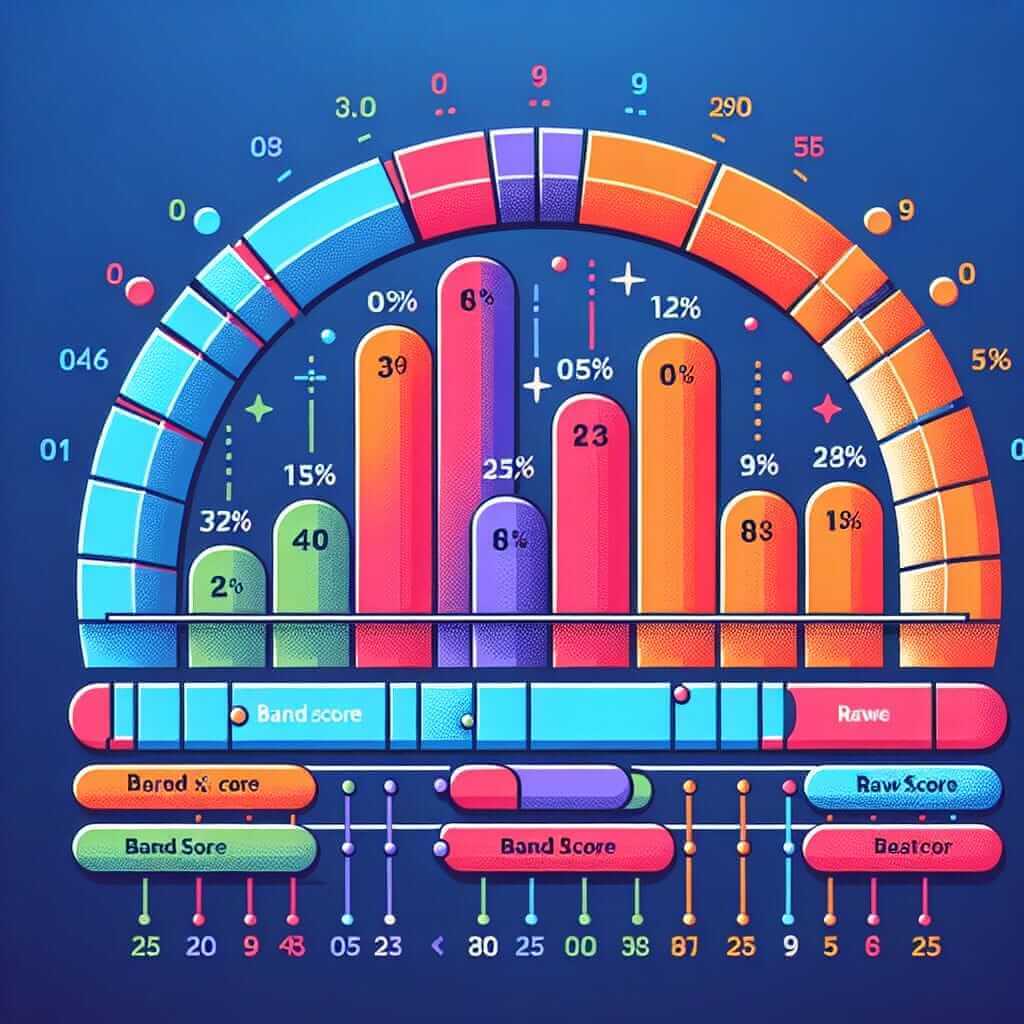As an IELTS instructor with over 20 years of experience, I often encounter students who are unsure about the IELTS Listening marking scheme. Understanding how the test is scored is crucial for effective preparation and achieving your desired band score. This comprehensive guide will delve into the intricacies of IELTS Listening marking, providing you with clarity and actionable strategies.
Understanding the IELTS Listening Test Format
The IELTS Listening test is the same for both Academic and General Training modules. It consists of 4 sections, each with 10 questions, making a total of 40 questions. The recordings are played only once, and they cover a range of accents and scenarios, from everyday conversations to academic lectures.
The Importance of Accurate Marking
Accurate marking is essential to gauge your true listening comprehension abilities. Knowing the specific criteria that examiners use can help you:
- Identify your strengths and weaknesses: By analyzing your practice test scores, you can pinpoint areas where you excel and areas that need improvement.
- Develop effective study strategies: Understanding the marking scheme allows you to tailor your preparation to focus on the specific skills and question types that carry more weight.
- Build confidence: Familiarity with the marking system can reduce anxiety and boost your confidence on test day.
How IELTS Listening Answers are Marked
The IELTS Listening test uses a straightforward marking scheme:
- Correct answers: Each correct answer receives one mark.
- Incorrect answers: No marks are deducted for incorrect answers.
This means that your final score reflects the total number of correct answers you provide.
Decoding the Band Score System
The raw score (total number of correct answers) is converted into a band score ranging from 0 to 9. The conversion table varies slightly between test dates to account for minor differences in difficulty.
Here’s a general guideline:
| Band Score | Raw Score (Approximate) |
|---|---|
| 9 | 39-40 |
| 8 | 37-38 |
| 7 | 35-36 |
| 6 | 30-34 |
| 5 | 23-29 |
| 4 | 16-22 |
| 3 | 10-15 |
| 2 | 5-9 |
| 1 | 1-4 |
| 0 | Did not attempt the test |

Common Question Types and Marking Considerations
The IELTS Listening test features a variety of question types, each assessing different aspects of listening comprehension. Some common ones include:
- Multiple Choice: Choose the correct answer from a list of options. Be aware of distractors – options that may seem plausible but are incorrect.
- Sentence Completion: Fill in the blanks with the correct words or phrases heard in the recording. Pay attention to grammar and spelling.
- Short-Answer Questions: Provide concise answers to specific questions using a limited number of words.
- Note Completion: Fill in missing information in a set of notes or a table.
- Diagram/Map/Plan Labelling: Identify and label parts of a visual representation based on the information provided.
Tips for Maximizing Your Listening Score
- Practice Regularly: Consistent practice with a variety of IELTS Listening materials is crucial. Familiarize yourself with different accents and question types.
- Develop Active Listening Skills: Focus intently on the recording, paying attention to keywords, signposting language, and changes in speaker intonation.
- Improve Your Vocabulary: A wide vocabulary is essential for understanding a range of topics and contexts. Make note of unfamiliar words and phrases you encounter during practice.
- Manage Your Time Wisely: Use the time allotted before each section to preview the questions and anticipate potential answers.
- Transfer Answers Carefully: After each section, you will have time to transfer your answers to the answer sheet. Ensure that you transfer them accurately and legibly.
Conclusion
Mastering the IELTS Listening test requires a combination of targeted practice, effective listening strategies, and a thorough understanding of the marking system. By following the guidelines and tips outlined in this guide, you can approach the test with confidence and achieve your desired band score. Remember, consistent effort and a strategic approach are key to unlocking your listening potential.